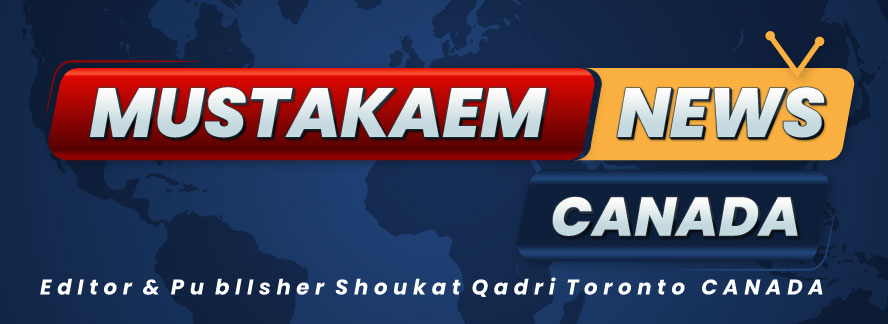March 28 – The term “tariff” has become a buzzword in global politics, moving from the business section to front-page headlines as major economies impose or threaten tariffs on rival nations. While tariffs are often viewed as tools in geopolitical brinkmanship, they can also serve as effective instruments to foster economic development in poorer nations when applied strategically.
Understanding Tariffs and Their Role in Global Trade
A tariff is a tax or duty imposed by one country on imported goods from another country. The primary purpose of a tariff is to make foreign goods more expensive, thereby encouraging consumers to buy domestically produced goods. Tariffs can take different forms, including:
- Ad Valorem Tariffs – A percentage of the product’s value.
- Specific Tariffs – A fixed fee per unit of imported goods.
- Compound Tariffs – A combination of ad valorem and specific tariffs.
Historically, tariffs have been used by nations to protect their domestic industries from foreign competition, create revenue for the government, and sometimes as leverage in international negotiations. However, when applied judiciously, tariffs can play a critical role in helping developing economies build a stronger industrial base and achieve economic growth.
How Tariffs Can Help Developing Countries
1. Protection of Infant Industries
Developing countries often struggle to compete with established industrial giants that dominate global markets. Tariffs can serve as a protective shield, giving fledgling industries the breathing space they need to grow and become competitive. By imposing tariffs on imported goods, local industries can develop without the immediate pressure of competing with established foreign manufacturers.
Countries like South Korea and Taiwan successfully used tariffs in the 20th century to protect their emerging industries. By sheltering their domestic industries from foreign competition, they were able to nurture their manufacturing sectors, which eventually became globally competitive.
2. Encouraging Domestic Production and Diversification
Tariffs can incentivize domestic production by making imported goods more expensive. This encourages local entrepreneurs to invest in manufacturing and other sectors, creating jobs and boosting the local economy. When tariffs are applied strategically, they can encourage diversification of the economy, reducing dependence on a few export commodities and fostering a more resilient economic structure.
For example, countries that rely heavily on agricultural exports can use tariffs to protect and develop their manufacturing sector, allowing them to gradually shift toward a more diversified and balanced economy.
3. Generating Government Revenue
In many developing countries, the tax base is limited due to low levels of formal employment and limited administrative capacity. Tariffs provide a reliable source of revenue that governments can use to invest in infrastructure, education, and healthcare — essential elements for long-term economic growth.
By imposing moderate tariffs on imported goods, governments can generate the funds necessary to build critical infrastructure, such as roads, ports, and power supplies, which can further stimulate economic activity.
4. Promoting Technology Transfer and Skill Development
Tariffs, when combined with policies that encourage foreign direct investment (FDI), can also facilitate technology transfer and skill development. By offering protection to domestic industries while simultaneously encouraging foreign companies to establish local production facilities, countries can gain access to advanced technologies and upskill their workforce.
This approach has been particularly effective in countries like China, where foreign firms entering the market were often required to form joint ventures with local partners, facilitating knowledge transfer and enhancing local technological capabilities.
Challenges and Risks Associated with Tariffs
While tariffs can offer significant benefits, they can also pose risks if not implemented carefully.
1. Risk of Retaliation and Trade Wars
Tariffs can trigger retaliatory actions from trading partners, leading to a cycle of escalating trade restrictions. Trade wars can be detrimental to all parties involved, disrupting global supply chains and increasing costs for consumers.
2. Increased Costs for Consumers
When tariffs are imposed, the cost of imported goods rises, which can lead to higher prices for consumers. If domestic industries are unable to meet demand or produce goods of comparable quality, consumers may be forced to pay more for lower-quality products.
3. Risk of Complacency in Protected Industries
Prolonged protection through tariffs can lead to complacency and inefficiency in domestic industries. Without the pressure of foreign competition, local industries may have little incentive to innovate or improve productivity, ultimately hindering long-term growth.
4. Potential Violation of International Trade Agreements
Many developing nations are signatories to international trade agreements that limit the use of tariffs. Imposing tariffs in violation of these agreements can lead to legal challenges and economic sanctions.
Striking a Balance: Smart Tariff Policies for Developing Nations
To maximize the benefits of tariffs while minimizing the associated risks, developing countries must adopt a balanced approach. Some key strategies include:
- Gradual Reduction of Tariffs – Tariffs should be gradually reduced as domestic industries become more competitive. This ensures that local industries remain dynamic and continue to innovate.
- Targeted Tariffs for Key Sectors – Rather than imposing blanket tariffs, governments should target specific industries that have the potential for growth and job creation.
- Incentivizing Efficiency and Innovation – Tariff protection should be coupled with policies that encourage efficiency, technological advancement, and export competitiveness.
- Compliance with International Trade Rules – Countries should ensure that their tariff policies comply with international trade agreements to avoid disputes and economic sanctions.
Conclusion: Tariffs as a Tool for Economic Development
When used effectively, tariffs can serve as a powerful tool to help developing nations protect their emerging industries, encourage domestic production, and diversify their economies. However, they must be applied with caution, taking into account the risks of retaliation, increased consumer costs, and potential complacency in protected industries.
For developing countries seeking to build a strong industrial base and achieve sustainable growth, the strategic use of tariffs can play a pivotal role in shaping their economic futures. By striking the right balance between protection and competition, these nations can pave the way for long-term prosperity and resilience in the global marketplace.



0 Comments